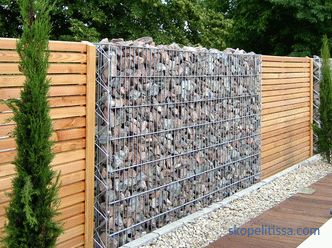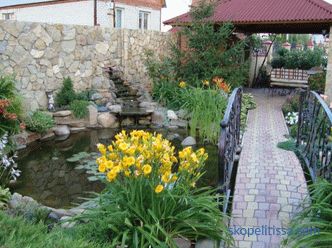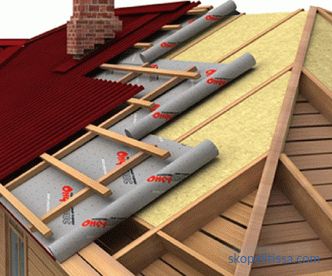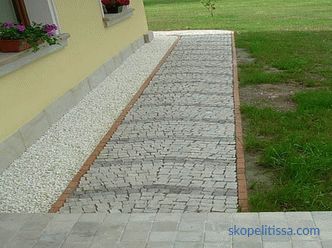Paving slabs look very aesthetically pleasing on the local area, garden paths, economic zone, around the pool and so on. It does not accumulate moisture, forming puddles, dries quickly in the wind or the sun. The service life is an average of 25 years. The material withstands thermal nets, does not melt in the sun and does not emit harmful substances into the environment. Laying paving slabs on a concrete base, although it seems to be a simple matter, but requires experience and attention. The stages of work, nuances and pitfalls are discussed in this article.
Types of tiles
Depending on the component components, the tile is subdivided into the following types:
-
Polymer-sand , consisting of polymer (LDPE), sand and coloring pigment. Durable and lightweight material is not designed for road paving expensive.
-
Reinforced produced by the vibratory casting method. Durable in bending and stretching.
-
Paving stones chipped, sawn and chipped and sawn.
-
With rubber filling . The tile with a soft surface is used on children's playgrounds.
-
With a three-dimensional pattern . The expensive material with photo printing is made in special molds with a protective coating against burnout and mechanical effects.
By the production method, the tile can be cast, pressed and hyperpressed. In the first case, the warm concrete solution is poured into molds and fills all voids with the help of vibration, after hardening the mixture is dried in heat chambers; The thickness of the product does not exceed 6 cm. It has an attractive gloss. In the second case, a slightly wet mixture is used, with which the forms of the vibropress are filled, the drying takes place in a moist environment in a heat chamber; can be used for highways; the surface is rough. Hyper pressing occurs without vibration under high pressure; elements have super strength.
Comparative characteristics table.
| Characteristic | Vibratory cast tiles | Vibropressed tiles |
| Compressive strength | 350-400 kg / cm. KV | 300 kg / cm. KV |
| Abrasion | 0.3 g / cm. KV | 0.4 g / cm. KV |
| Water absorption | 4.5% of volume | 6% volume |
| Frost resistance | F 300-400 | F 200 |
| Service life | over 20 years | Over 15 years |
Sizes
In the construction market, the elements of the coating are presented in a large assortment and of various sizes:
-
10 x 10 cm . Stone blocks with a height of 3-10 cm.
-
30 x 30 cm . A tile with an optimal size-to-weight ratio is able to withstand loads that are sufficient for car parking.
-
40 x 40 cm . In this size, made the popular elements of Antique, Parquet, Tablets, the cut of the tree. The size is perfect for the garden path.
-
50 x 50 cm . It has a significant weight, requires a quality basis. Used for paving the local area, can withstand heavy loads.
Laying principles
The technology of laying paving slabs on a concrete base consists of several stages:
-
Geometrical marking , while driving the pegs as often as possible to prevent the rope from sagging.
-
Soil removal (to a depth of 20-25 cm), planning and compaction of existing soil.
-
Installation of curbs below the paving level by 2-3 cm (so that their upper edges do not prevent the water flow). For this purpose, 10-15 cm of rubble are poured into the prepared trench, rammed and the mortar is poured (2 cm), then a curb is installed and the concrete is “grabbed”.
-
Preparation of the base : backfilling and compaction of rubble (15–20 cm), waterproofing gaskets (when creating a blind area) and reinforcement (with planned large loads); pouring concrete mix with a layer of 10-20 cm. (M 100-M 200).
-
Laying paving slabs onto the underlying layer using a ramming hammer. The process is performed on its own. Pruning produce grinder or circular.
-
Compaction and filling of the space between the buckle elements. After laying the tiles, the area of the paving is poured abundantly with water to make the mixture frozen.
If the installation will be done on a dry solution, the height of the dumping should be 30 cm and the time for shrinkage should be 3 weeks.
Hartsovka - composition for laying paving slabs of two components for plastering and masonry mortars. It can be:
-
Simple - from the binding component (cement, lime) and filler (dolomite, sand, expanded clay, marble chips, calcite).
-
Difficult - with the addition of gypsum and clay to the above.
When working on large areas, use a roller or a vibrating plate to level the base and the elements themselves. In addition, laying paving slabs on concrete implies the arrangement of drainage. The most common is the transverse slope (2-3 degrees per linear meter of area and up to 5 - for the blind area) to the drainage chute.
On our site you can find contacts of construction companies that offer construction services for small architectural forms . Directly to communicate with representatives, you can visit the exhibition of houses "Low-rise Country".
Why a concrete foundation is needed
The traditional variant of laying on the crushed stone basis is not always the best. For example, when laying tiles on a concrete walkway, in a parking spot or a pedestrian area with heavy traffic. And also, this is the only way to create paving on heaving soil, since no progress is terrible for the concrete monolith.
Under the influence of weather conditions the tile elements on the sand-gravel pad significantly subside , and not evenly, forming a depression, which reduces all the laying work to zero. In the case of concrete, this will not happen, with a correctly laid laying, the base will not allow the tile to move. Laying paving tiles on the solution allows you to achieve a perfectly flat paved surface with clear lines.
The main enemy of the tile is water: freezing, it expands and displaces the coating elements. So that they do not fall off at the first frost, it is necessary to ensure high-quality drainage of water.
The process is quite complicated, so for large volumes, you should contact a reputable professional.
Tile on already existing concrete
Laying paving slabs on an old concrete base begins with its thorough cleaning and covering it with a special primer for adhesion (adhesion) of glue.
Then the following actions are performed:
-
tile lay on the surface for fitting, where you need to tint;
-
on the old concrete put glue made from finished dry mixes;
-
portions lay the tile ;
-
the seams are poured with a caramel and spilled;
-
the surface is cleaned .
Pavement
The covering of this material evokes thoughts about the narrow cobbled streets of cities with the history of old Tallinn, Prague, Rothenberg or the south of France, Italy.

It might be interesting! In the article on the following link, read about how to arrange a lawn in the country: varieties of landscape solutions, care + 45 photos .
Although it is more expensive, but aesthetics are worth it to give preference to paving stones:
-
a wide color palette and a variety of shapes;
-
high reliability ;
-
the ability to execute the figure of any configuration;
-
resistance to aggressive environmental influences;
-
life is 30 years;
-
is ecological and non-toxic.
The classic paving stone is made of granite or basalt, but a material with a lower density — limestone, slate — is suitable for use in private households. It can also be made of concrete with various inclusions.
Traditionally, cobblestone paving is not rigid, since the elements are placed on a sandy pillow, and they can move, which allows to preserve the integrity of the coating during ground movements or excessive load. But in terms of modernity, it is placed on a reinforced concrete base.
As well as advantages, the material has a large number of disadvantages:
-
high cost of natural material (made of concrete is not much more expensive than tile) and works on its laying;
-
rigid requirements to drainage;
-
pavement from paving stones (except for sawn elements) has high noise level ;
-
very low grip tires with a wet surface (especially ground).
In addition, the paved surface makes it uncomfortable to walk in thin heels.
Preparation of the base for paving stones
The complexity of laying the material increases, since the base is reinforced. This is done as follows:
-
on the prepared cushion (as for the tile) first pour a layer of concrete c in cm;
-
they lay a reinforcing mesh made of wire (6 mm in diameter) with mesh up to 10 cm on it;
-
then another layer of concrete is poured mixes (6-8 cm) so that the level of the base is below the level of the ground;
-
after the concrete has set (after 2-3 days) proceed to paving .
From the video you can learn how to prepare the base for paving slabs:
It can be interesting! In the article on the following link read about the top 10 stairs in the modern style: difficult in simple .
Conclusion
Cobble pavement is perhaps the most practical, durable and noble coating if you have sufficient funds. But we must remember that this is quite a capricious material in terms of installation - if something is not done according to technology, then over time, the stone blocks may “fail” or vice versa. Therefore, all the work on laying tiles is desirable to trust the professionals.
Rate this article, we tried for you




